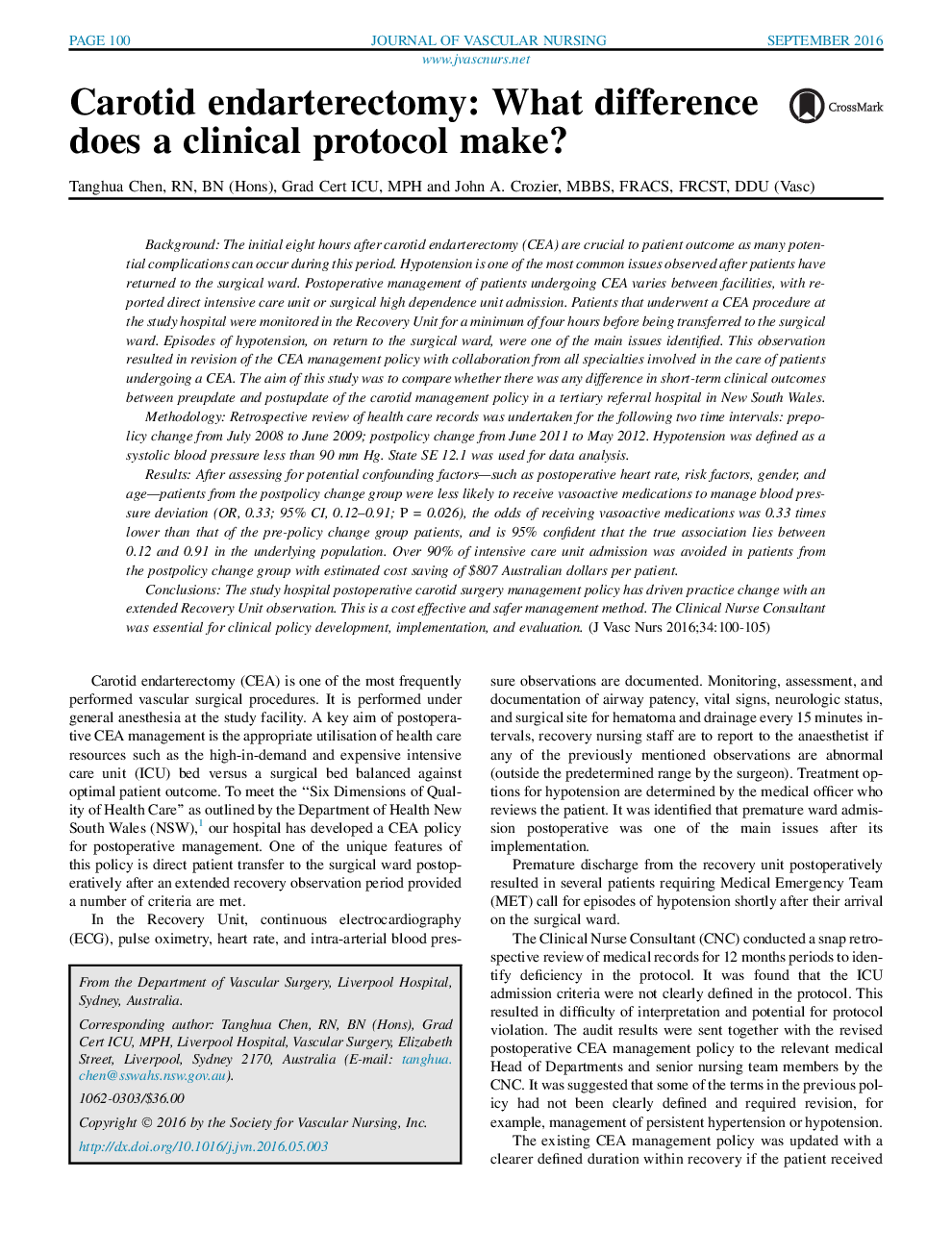| Article ID | Journal | Published Year | Pages | File Type |
|---|---|---|---|---|
| 2671906 | Journal of Vascular Nursing | 2016 | 6 Pages |
•Blood pressure deviation postop carotid endarterectomy is one of the common issues.•10.8% of patients requiring management for hypotension after returning to the ward.•CEA protocol with an extended period of recovery unit observation is safer and cost effective.•Participation from multidisciplinary team is essential for protocol implementation.
BackgroundThe initial eight hours after carotid endarterectomy (CEA) are crucial to patient outcome as many potential complications can occur during this period. Hypotension is one of the most common issues observed after patients have returned to the surgical ward. Postoperative management of patients undergoing CEA varies between facilities, with reported direct intensive care unit or surgical high dependence unit admission. Patients that underwent a CEA procedure at the study hospital were monitored in the Recovery Unit for a minimum of four hours before being transferred to the surgical ward. Episodes of hypotension, on return to the surgical ward, were one of the main issues identified. This observation resulted in revision of the CEA management policy with collaboration from all specialties involved in the care of patients undergoing a CEA. The aim of this study was to compare whether there was any difference in short-term clinical outcomes between preupdate and postupdate of the carotid management policy in a tertiary referral hospital in New South Wales.MethodologyRetrospective review of health care records was undertaken for the following two time intervals: prepolicy change from July 2008 to June 2009; postpolicy change from June 2011 to May 2012. Hypotension was defined as a systolic blood pressure less than 90 mm Hg. State SE 12.1 was used for data analysis.ResultsAfter assessing for potential confounding factors—such as postoperative heart rate, risk factors, gender, and age—patients from the postpolicy change group were less likely to receive vasoactive medications to manage blood pressure deviation (OR, 0.33; 95% CI, 0.12–0.91; P = 0.026), the odds of receiving vasoactive medications was 0.33 times lower than that of the pre-policy change group patients, and is 95% confident that the true association lies between 0.12 and 0.91 in the underlying population. Over 90% of intensive care unit admission was avoided in patients from the postpolicy change group with estimated cost saving of $807 Australian dollars per patient.ConclusionsThe study hospital postoperative carotid surgery management policy has driven practice change with an extended Recovery Unit observation. This is a cost effective and safer management method. The Clinical Nurse Consultant was essential for clinical policy development, implementation, and evaluation.
